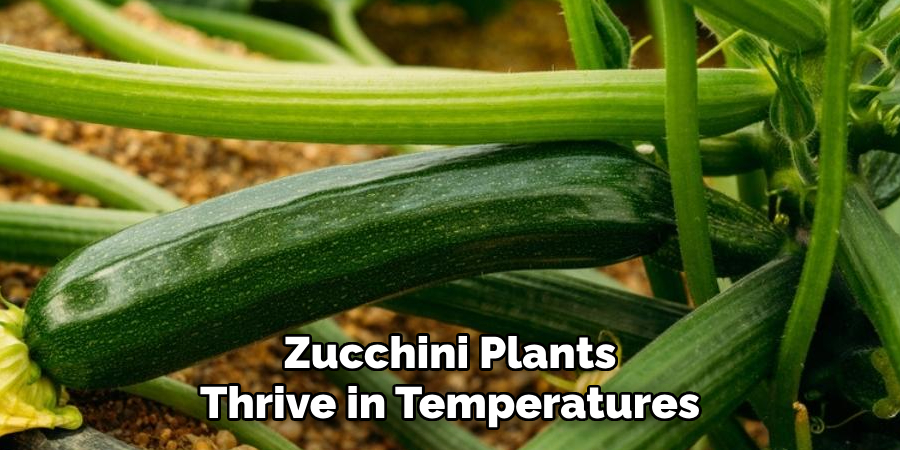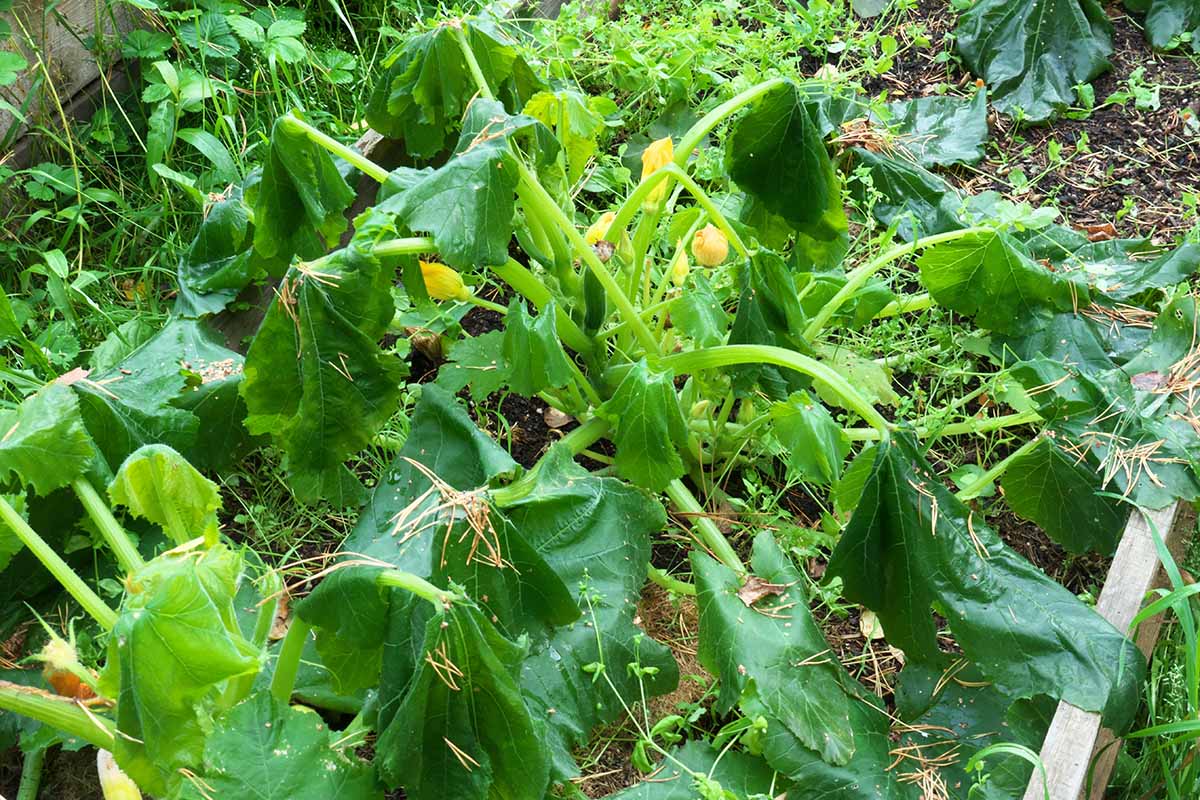To revive a wilted zucchini plant, water it thoroughly and provide ample sunlight for optimal growth. Wilted zucchini plants can be saved by following these simple steps.
When a zucchini plant starts to wilt, it is often a sign of dehydration and lack of sunlight. Therefore, giving the plant a good watering and placing it in a sunny location can help to revive it. Additionally, providing proper drainage and avoiding overwatering can also aid in the recovery process.
By taking these steps, you can revive your wilted zucchini plant and ensure its continued growth and productivity.

Credit: apps.extension.umn.edu
How to Revive Wilted Zucchini Plant: Step by Step Guide
Assessing The Condition Of Your Zucchini Plant
Assessing the condition of your zucchini plant, it is essential to be aware of signs of wilting in zucchini leaves. Carefully observe the plant for any drooping or wilting leaves, as this could indicate a problem. Identifying potential causes of wilting is crucial in determining the appropriate action.
Check the soil moisture levels surrounding the plant. If the soil is too dry, it could be causing the wilting. Ensure the plant receives adequate water but avoid overwatering, as this can lead to root rot. Evaluate other factors such as insect infestation or disease, as they can also cause wilting.
Address any issues promptly to revive and nurture your wilted zucchini plant. With proper care and attention, it will bounce back to health and thrive in your garden.
Restoring Moisture To The Soil
Zucchini plants can quickly become wilted due to lack of moisture in the soil. To restore moisture, first, evaluate if your plant needs water by checking the soil’s dryness. Proper watering techniques are crucial to avoid overwatering or underwatering the plant.
Additionally, there are other methods you can use to improve soil moisture retention, such as adding organic matter or using mulch. These techniques help the soil retain water for longer periods, preventing wilting and promoting healthy growth. By properly assessing the plant’s water needs and implementing effective moisture restoration methods, you can revive your wilted zucchini plant and ensure its optimal growth and productivity.
Addressing Nutritional Deficiencies
Addressing nutritional deficiencies in wilted zucchini plants is crucial for their revival. Identifying common nutrient deficiencies will help determine the right solution. Organic fertilizers are effective in revitalizing wilted zucchini. They provide the necessary nutrients for healthy plant growth. Implementing a balanced nutrient feeding schedule ensures that the plant receives all the necessary elements for optimal growth.
This schedule should include the right quantities of nitrogen, phosphorus, and potassium. Regular monitoring of the plant’s health and observing any signs of deficiencies is essential. By addressing nutritional deficiencies promptly and implementing organic fertilizers, wilted zucchini plants can be revived and flourish once again.
Proper care and attention to nutrient levels are key to ensuring the health and vitality of zucchini plants.
Managing Pests And Diseases
Managing pests and diseases to revive a wilted zucchini plant, it’s crucial to manage pests and diseases effectively. First, recognize common pests that affect zucchini plants, such as aphids, cucumber beetles, and squash bugs. Use natural remedies like neem oil or insecticidal soap to control these pests.
Prevention methods like regular inspection, proper spacing, and companion planting can also help. Moreover, identifying zucchini plant diseases like powdery mildew, blossom end rot, and bacterial wilt is important. Treat each disease appropriately, for example, by applying fungicides or adjusting soil ph.
Remember to remove any infected plants to prevent the spread of diseases. With these strategies in place, your zucchini plant will have a better chance of thriving and producing healthy, delicious harvests.
Proper Pruning And Support
Proper pruning plays a crucial role in reviving wilted zucchini plants. Understanding the importance of pruning is essential for their recovery. Techniques such as removing dead or damaged leaves and branches help stimulate growth. By providing optimal support, the zucchini plants can regain their strength.
Staking or trellising them can prevent wilting caused by the weight of the fruits. Regularly checking for any signs of drooping and promptly providing support can prevent further damage. Reviving wilted zucchini plants requires patience and attention to detail. Following proper pruning techniques and providing the right support can revive and restore the health of these plants.
With the right care, the zucchini plants will thrive and produce an abundant harvest.
Enhancing Sunlight And Temperature Conditions
To enhance the sunlight and temperature conditions for your wilted zucchini plant, it is crucial to evaluate the impact of sunlight on the plants. Manipulating shade and positioning the plant for optimal sunlight exposure is key. Ensure that your zucchini receives the maximum amount of sunlight during the day by placing it in an area with minimal shade.
Additionally, maintaining ideal temperature levels is essential for optimal growth. Zucchini plants thrive in temperatures between 70-85°f, so it is important to provide the necessary warmth. Utilize methods such as mulching to regulate the soil temperature and protect the plant’s roots.
By taking these measures, you can revive your wilted zucchini plant and promote its overall health and productivity.

Other Factors Affecting Plant Health
Environmental stressors can greatly impact the health of zucchini plants. Properly recognizing and addressing these stressors is crucial. Beyond the usual factors of water, nutrients, pests, and sunlight, there are other elements that can negatively affect plant health. For example, maintaining a clean and tidy garden is of utmost importance.
This helps to prevent the buildup of debris and pests that can harm the plants. Additionally, paying attention to the overall environment is essential. Factors such as extreme weather conditions, pollution, and even nearby structures can all impact the well-being of zucchini plants.
By understanding and taking action against these stressors, gardeners can effectively revive wilted zucchini plants and enhance overall plant health.
Harvesting Strategies And Future Planning
Reviving a wilted zucchini plant requires optimal harvesting timing and careful planning for future plantings. To ensure the long-term health and vitality of your zucchini, it’s important to follow specific strategies. First, consider the timing when harvesting your zucchini. Picking them when they are tender and small is ideal.
This ensures optimum taste and texture, while also encouraging new growth. Moreover, it’s essential to plan for future plantings and make sure there is enough space and sunlight for your zucchini to thrive. Rotate the planting locations to prevent disease and maximize nutrient absorption.
Additionally, deep watering and regular feeding with organic fertilizer will support healthy growth and prevent wilting. By following these tips and nurturing your zucchini plant, you can enjoy a bountiful harvest and ensure its longevity for seasons to come.
Frequently Asked Questions On How To Revive Wilted Zucchini Plant
How Do You Revive A Wilted Zucchini Plant?
To revive a wilted zucchini plant, start by watering it deeply and ensuring proper drainage. Check for pests and diseases, and remove any affected leaves or fruits. Provide adequate sunlight and apply a balanced fertilizer. Regularly prune the plant to improve airflow and promote new growth.

What Causes Zucchini Plants To Wilt?
Zucchini plants can wilt due to various reasons. The most common causes include over or under watering, insufficient sunlight, nutrient deficiencies or excesses, pest infestations, or diseases such as bacterial wilt or fusarium wilt. Proper care and regular monitoring can help prevent wilting and keep plants healthy.
How Often Should You Water A Zucchini Plant?
Water zucchini plants deeply once or twice a week, depending on weather conditions. Ensure the soil is moist but not waterlogged. Stick your finger or a moisture meter into the soil to check the moisture level. Increase watering during hot, dry spells, and reduce during rainy periods to avoid waterlogged roots.
Conclusion
With the right intervention and care, reviving a wilted zucchini plant is entirely possible. By identifying the cause of wilting and addressing it promptly, such as inadequate watering, nutrient deficiency, or pests, you can revitalize your zucchini plant and ensure a bountiful harvest.
Providing the plant with proper watering, well-draining soil, adequate sunlight, and regular fertilization will give it the best chance for recovery. Additionally, pruning dead or dying leaves and branches will allow the plant to redirect its energy towards new growth.
Remember to monitor the plant closely and make adjustments as necessary. Don’t be discouraged if you encounter setbacks along the way; gardening is a learning process, and with patience and perseverance, you can successfully revive your wilted zucchini plant and enjoy the fruits of your labor.
Happy gardening!

